Blogpost from Barcelona, September 2019.
Day 1
The conference, branded as the 4th Innovative Learning Spaces Summit organised by Luxatia International was chaired by Mark Swales, Head of Estates and Facilities from Sheffield Hallam University. He gave each presenter a clear introduction and managed the Q&A sessions well afterwards. One of the most positive aspects was his detailed summary of the previous day presentations, I’ve not heard that done before. 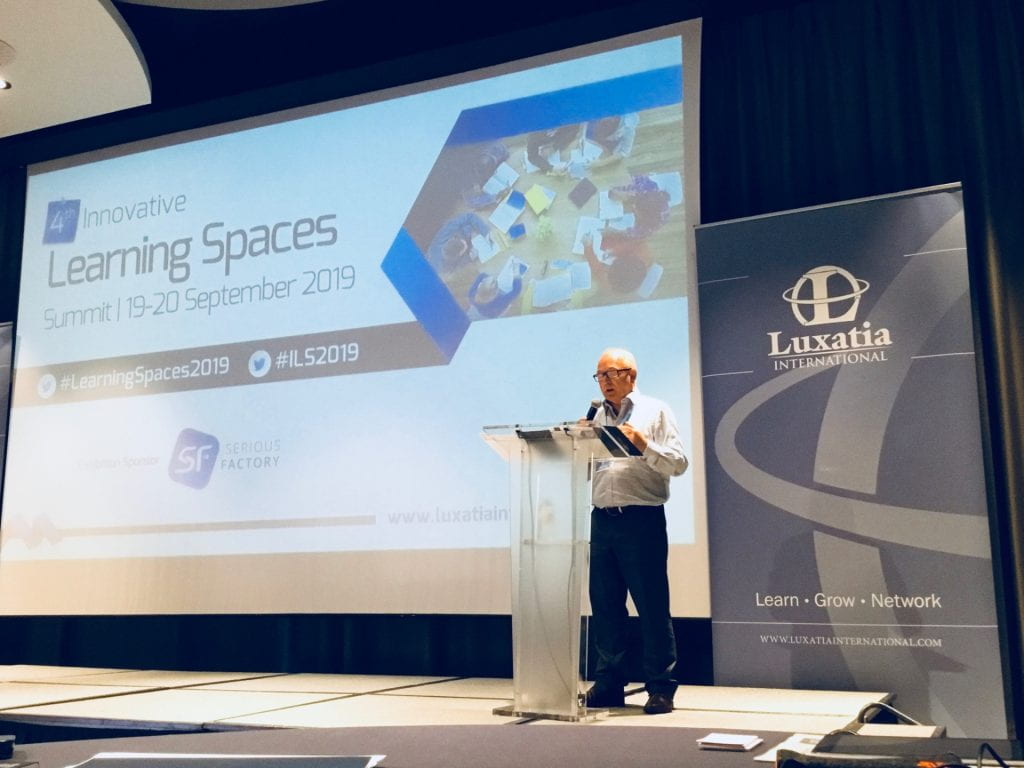
The first speakers were the Belgium, an institution previously named KU Leuven, but now known as Associate KU Leuven with the recent mergers of other local institutions.Iris Peeters talked about the Alina Project, which aimed to engage with all stakeholders by bridging the gaps, as there was not enough interest and energy with many professors engaged in research and not as motivated about teaching, let alone active learning. Iris played an engaging video about why didactic teaching “doesn’t work with our brains” by David Helfand.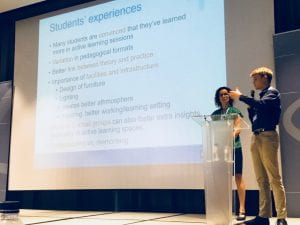
At KU Leuven, the ALINA project team carried out a considerable amount of surveys, one gathered over 850 responses, Iris made reference to an article by Whiteside, Brooks and Walker on the impact of space on learning. Her co-presenter was a recent graduate called Robin who talked about his involvement as part of the Student Council and their survey in 2015 on active learning. In summary, Students were neither pro or contra as the risks around the cost of time / benefit was balanced. But students were afraid of the unknown and “like to have it easy”.
Students were overall not convinced that they’ve learning more in active learning sessions, and group work could cause distraction, so a mind shift is needed for students and professors. However, their research shows that students like variation, and they found a better link between theory and practice. Group working could lead to more insights in active learning spaces, where there is more understanding and less memorising.
The next speaker worth highlighting was Mat Davies, Head of Estates at the Rhodes Trust, Oxford University. At the business School, students pay £50K each! So they clearly need to hit competitive global standards. He talked about the changes in self led learning spaces, small group rooms, now sitting empty due to cafe-led social learning spaces, and more relaxed study spaces. Executive Education is all about transforming thinking and behaviours in order to transform business, with lots of experiential sessions taking place.
Mat also talked about changes to the learning environment in terms of The Oxford Global leadership Centre, which is housed in a building that was many years ago an old power station from 1800’s. It is a residential retreat for business students where the learning experience runs from check in to check out. Taking a cue from boutique hotels with intuitive controls along the lines of new Smart buildings.
Another project to note from Mat was The Oxford Foundry – opened in 2017. Aimed at fostering entrepreneurship for 23,000 Oxford students, with incubator spaces, launch pad workshops, areas for meetings and business presentations. The Victorian building was an old club and was designed and delivered on the cheap, completed within 15 weeks by Oxford University staff using recycled furniture. The tight deadline was due to the availability of the VIP who agreed to open the building, but only one specific day, namely Tim Cook of Apple. Mat considers it to be the Favourite place on campus for students, with 4,000 students signed so far.
He finally mentioned something of real importance to me, namely that in all projects we should “Beware traditional architects – employ an educationalist first”
Next up was Marc O’Riain, Cork Institute of Technology and the Architecture Factory, his talk was titled “Inspiring future designers through the design of a passive pedagogic supportive environment”
I was taken by Marc’s creative approach as his case study focussed on how to create an environment to improve student engagement. It was felt at the studio must not replicate the hierarchical and asymmetric power of architectural practice. He decided that they should remove the traditional barriers between lecturers and students on order to encourage communities of practice.
The main aim was to create a social ecosystem, especially with areas for informal critique to create more equality within the space. The innovative approach featured a number of shipping containers in a large industrial type space of the campus. They removed the roof of each container as they were felt to be oppressive and allowed a path for natural light and created 6 new roof lights, then built a mezzanine floor built nearby for more students space. Marc discussed how it has improved the course’s popularity and achieved acclaim for prospective students. Now the Institute at Cork has students winning awards, and is seen as evidence of a real impact on learning outcomes.
Later in the day we spent an hour and a half engaged in a group activity Called Out of the Box Thinking in 3D with Anna Donato from the Technical University of Munich. One key quote resonated with my experience of meetings, where “In group meetings, often 20% of the group speaks over 80% of the participants” Colleagues who have experienced Lego Serious Play will be familiar with the concept, but I found it quite refreshing and insightful with my fellow delegates.
I followed this session with my presentation of the Journalism Newsroom case study from City. I consider the space to be innovative in its conceptualisation and opportunities it offers for technology-enhanced and student centred active learning.
OK I maybe biased, but take a look at the blog post here;
Day 2.
The main highlight was a presentation by Stephen Heppell from the Universidad Camilo Jose Cela in Madrid. Stephen talked about the Role of learner in the design of learning spaces.
Stephen often gave a verbal bullet points during his case studies, such as “Agility not flexibility” this I liked, as the F-word is often used without care and consideration for what it really means.
Another one that resonated was “Research not opinion – experience not guesswork”
And a last one that was optimistic was how being cut back on budget or having to make compromises still led to an “Aggregation of marginal gains”
Stephen made a side reference to a Danish school had a running lane to avoid children being told off for running indoors, this was in relation to the static behaviour expected by schools with children forced to sit still all day. Other highlights from Stephen’s talk were the installation in a school of a 5 degree curve in a glass wall that had refracted audio noise as opposed to sound being reflected back into the teaching area. My attention is always highest when people discuss furniture and Stephen showed images of some interesting tables with curves, he said that the hollow curves are for quieter work, and convex curves for more gregarious activity and sitting back and looking around.
In terms of seating he mentioned chairs that should have a seat back set at 120 degree angle to allow blood flow when children are seated. He referred to the use of tiered seating, something I have designed in a number of learning spaces, where it’s possible to achieve density through agility. Stephen often stated the importance of good ventilation, referring to a Dubai school which had Co2 levels that caused students to experience 7000 parts per million of recycled air, and significantly children began showing signs of ADHD. Apparently Co2 levels lay down in a room, so move to, such as walking around wakes you up. Minimise C02 bring your own plant, again a reference to biophilic principles as well as environmental concerns.
Stephen suggested that in communicating how to use a learning space, well designed graphics can signpost technology and what pedagogies are supported. But in terms of the Smart Campus, he talked about his website www.learnometer.net, and how he has experimented with putting sensors into furniture to encourage more awareness and data gathering for ergonomics and wellbeing of students.
Finally, the last talk was entitled “Technology and space transforming education: a social constructivist approach” by Osama Khan, University of Surrey and formerly from Southampton Solent University. One highlight was the common description of the lack of educational research into effective learning experiences from new learning spaces. But there is some research that shows improvement in student performance within an improved learning space, but often small scale examples. He referred to the paper “Theory, typology of relationship between space and education” by Bligh [2014] Bligh and Crook 2017.
Interestingly Osama Created a user experience team to focus on the development of agile classrooms and greater accessibility. At Solent the recent £33m project developed 44 classrooms, where 86% of them are active agile classroom… and it does have a Harvard style LT in the round 150 capacity.

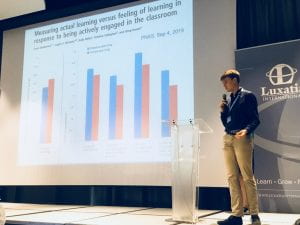
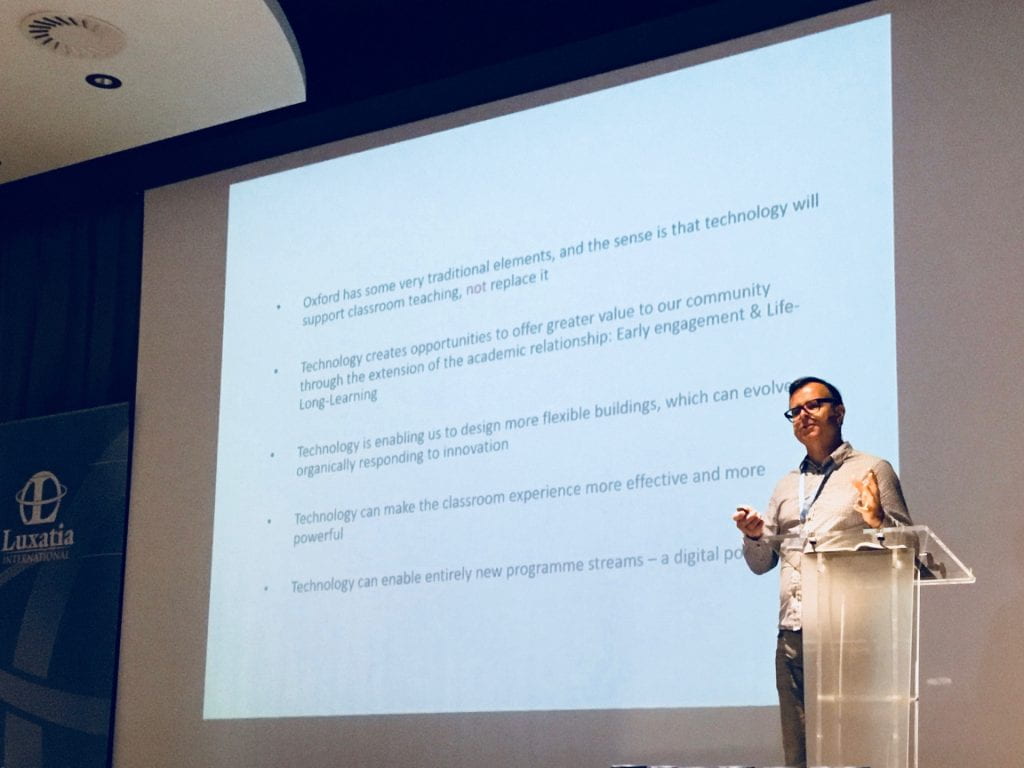

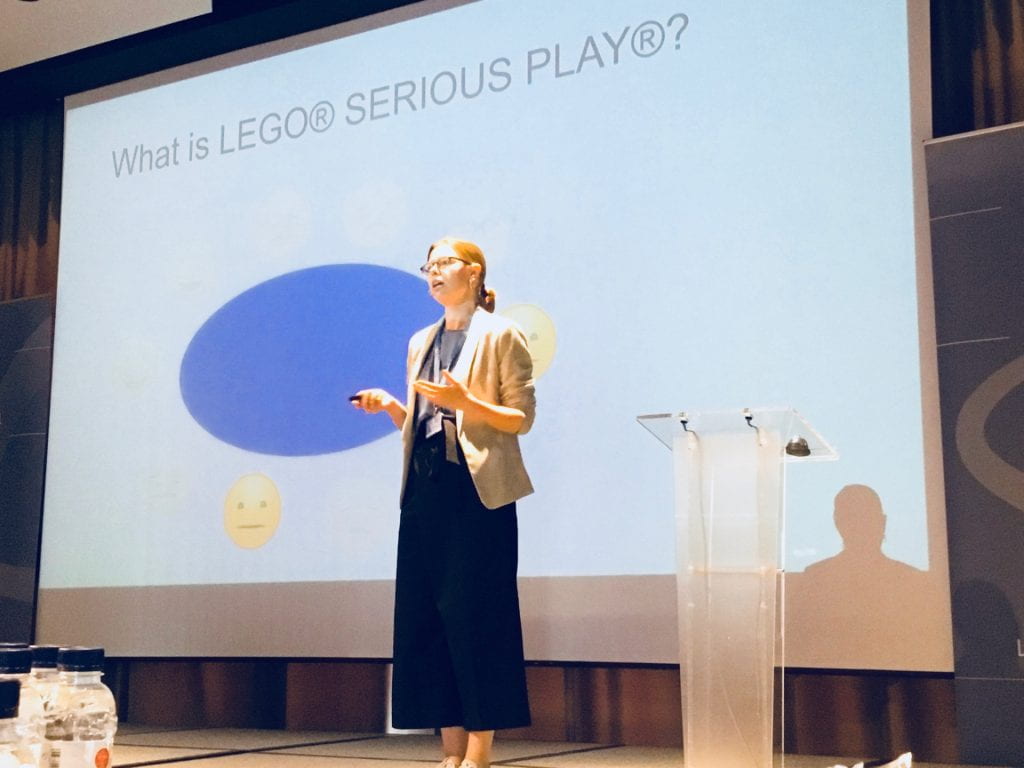
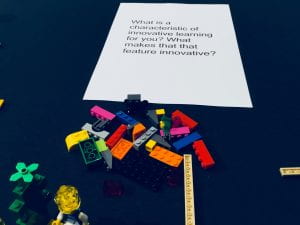

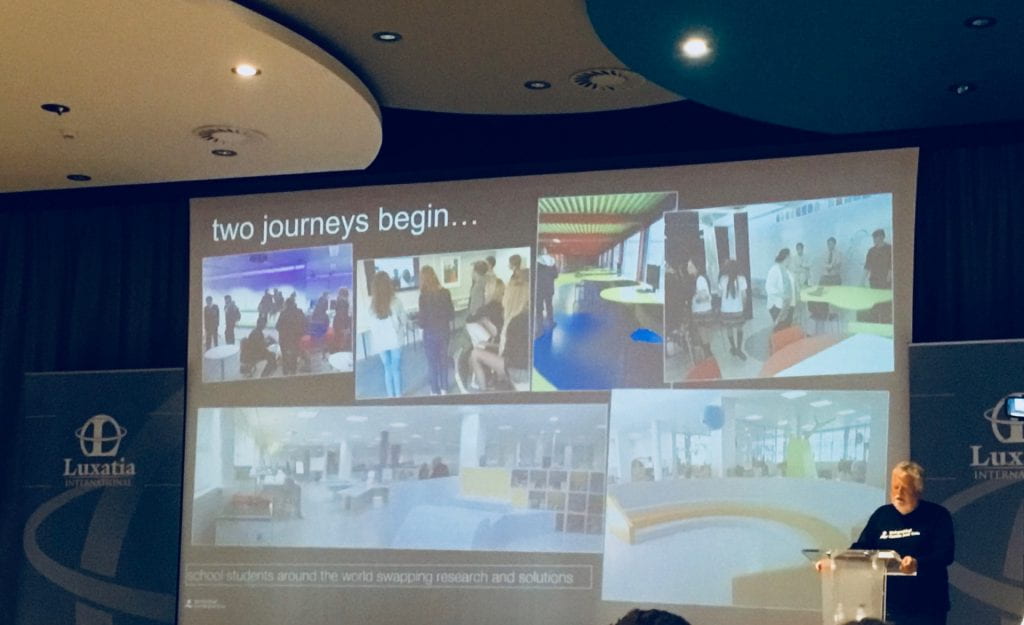
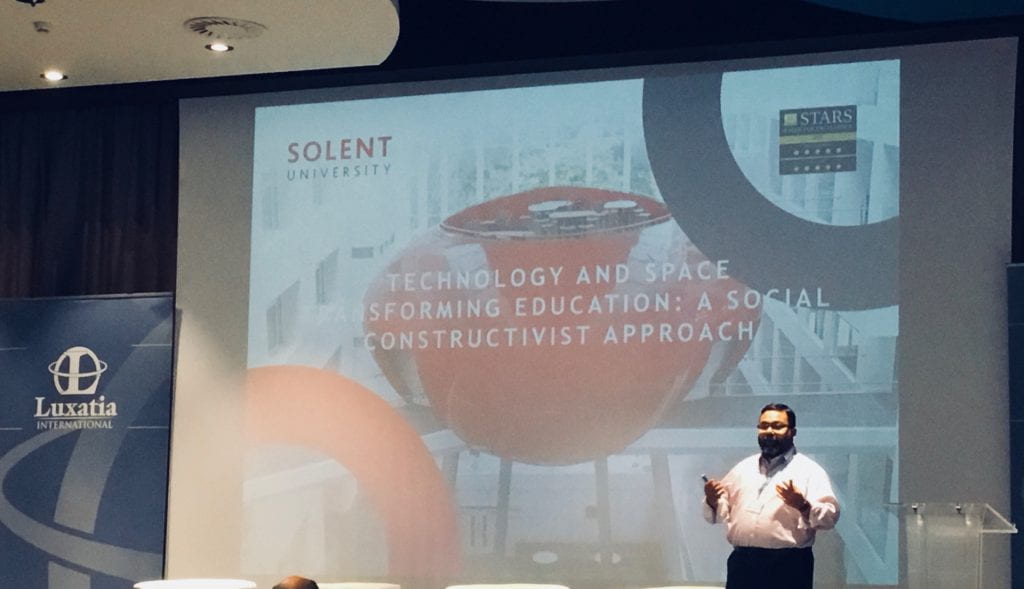

Learnt the meaning of biophilic today and thought the ‘Beware, traditional architects – employ an educationalist first’ message was strong -thanks James
The comments about being wary of traditional architects and “research not opinion – experience not guesswork” struck a chord with me. I had a less than happy experience at a previous workplace with a library design that didn’t work for students or staff. I wondered how much the architects had researched how students and staff use, and want to use, libraries before they created the design.
Really useful read thanks James – I particularly resonated with the idea of more cafe led social learning spaces and more relaxed study spaces. This is clearly where we learn more and transformative learning can take place. Great sessions here to learn from.